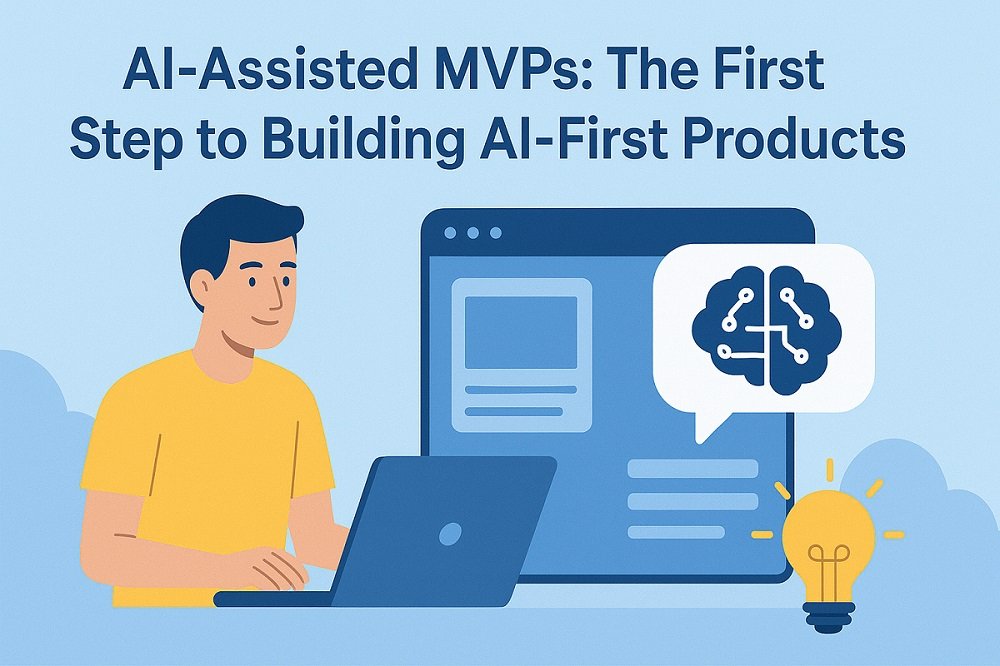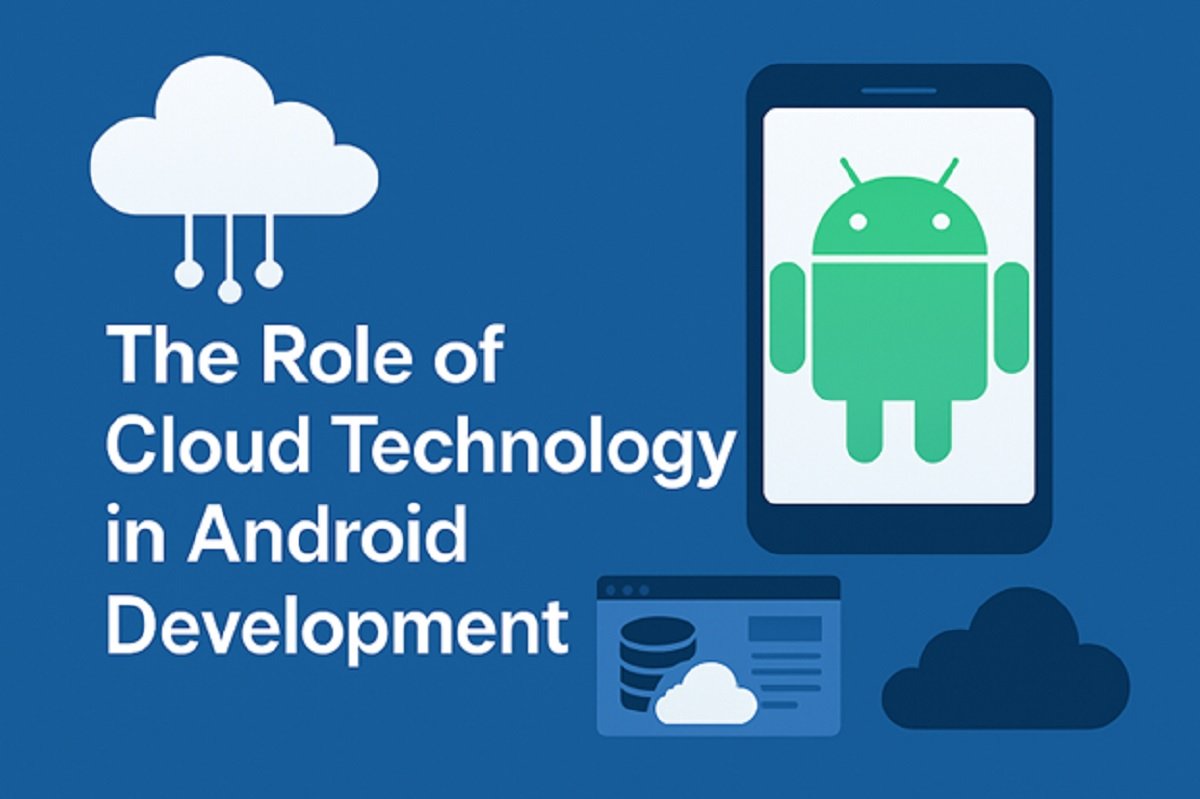How AI-Assisted MVPs are Powering AI-First Era of Product Development?

The startup environment and space is super competitive in today’s time. The global startup economy landscape has recently been massively disrupted by AI that has helped accelerate R&D cycles, and significantly reduce capital investment requirements, making it easier for companies from all around the world to join this landscape. Even enterprises have been pushing forth more and more products and services at an unprecedented scale. One important aspect that is acting like the catalyst in this shift of successful businesses globally are AI-assisted MVP.
According to PwC, AI could contribute up to $15.7 trillion to the global economy by 2030, making it the single biggest commercial opportunity in today’s fast-moving digital world.
The shift from the mentality of adding AI as a condiment to existing applications to AI-driven software development has opened up gates for better productivity, higher efficiency, and reduced timelines for businesses to launch their product to the market. If you are looking to leverage the benefits of using AI in MVP development from day one of your new project, we will break down how you can go about it, and all the important considerations you need to keep in mind moving forward.
Why Should You Opt For AI-First Product Development?
Building an AI-assisted MVP provides a powerful competitive edge for your product. Instead of launching a half-baked product in the market, facing criticisms from users on unexpected errors, you will be able to handle the majority of the challenges head-on, before the product is ever experienced by your users. While this may seem to delay the deployment of your product, it would actually save you significant time and money in the long run.
Enhanced User Experience and Value
AI MVP development provides various assets you can use for truly personalizing and providing intelligence experience to your users from the very first interaction.
Instead of providing a generic one-size-fits-all product, an AI-assisted MVP can be fine-tuned to:
- Provide personalized recommendations
- Automate tedious tasks
- Anticipate user needs
Consider this: You want to build a basic e-commerce MVP application that provides the list of products. However, if you opt for an AI-assisted MVP, the same basic ecommerce store could now use a basic recommendation engine to show users the products they are more likely to buy. This is a basic strategy that has enabled Netflix to generate over $1 billion annually from personalized recommendations. Such immediate and tangible value from such a basic integration can do wonders for user retention and engagement.
The Data Flywheel
The success and accuracy of AI models sly solely on the shoulders of how good the training data is. When you integrate AI from day one, it establishes a direct feedback loop that fuels your product’s growth. Each user interaction generates valuable data that can be used for improving AI model accuracy.
Since the model has been trained on your product since inception, it results in delivering better user experience, which attracts more users, and generates even more data. This data flywheel creates a self-substaining and powerful cycle of continuous improvement which is difficult for your competitors to replicate. With such a mindset you are not just creating a product, but an intelligent system that gets smarter with every use.
Future-Proofing and Scalability
Taking an AI-first approach forces the developers to design a robust and modular architecture. You need to consider and analyze all aspects thoroughly, from your data pipelines, model training infrastructure, to MLOps from the outset. Having such a foresight and well planned architecture prevents the costly and time-consuming refactoring process that often plagues companies that try to stick AI as an afterthought after deployment. Building an AI-assisted MVP from the get go ensures your product is built on a foundation that can scale with your user base.
A Practical Roadmap for Building Your AI-Assisted MVP
If you are planning for AI integration in MVP, it requires more skills and process than just adding a model or algorithm. It is best to follow a structured approach that aligns with your business goals, technical feasibility, and user value.
Having a clear roadmap ensures your teams can focus on solving the right problems first, focus on core features, and integrate AI strategically where it can deliver measurable results. If you are planning AI-based MVP development for startups, it becomes all the more important to follow a structured plan to avoid complexity, accelerate time to market, and set a strong foundation for future scaling.
Step 1: Define the AI-Solvable Problem
The very first thing to understand when building an AI-assisted MVP is the fact that not every problem needs AI. Overwhelming the project with cosmetic AI is often what turns products to failures in no time. You need to hire AI developers that can identify a high-impact user problem that AI can provide value for. Once you identify this, treat it as your AI-powered core functionality.
Validate the Pain Point: Ideas thrown around discussion rooms are good for getting the conversation started, but they are far from the truth. Instead of having meetings internally, reach out to your target audience through surveys, interviews, and market research. For instance: a fintech startup could validate that small businesses owners find it difficult to manually categorize their expenses.
Hypothesize and Define Success: Formulate a clear hypothesis on how AI can address the defined pain point. Define your measurable success criteria. For our example, it could be reducing manual effort by 50% or improving accuracy in categorization. Having such a clear goal provides a clear benchmark the AI-assisted MVP has to match to prove its value.
Step 2: Plan Your AI-Powered MVP
Once you have defined the problem, it's time to create a solid plan. A well-structured plan ensures that your MVP remains lean, functional, and aligned with real business needs rather than getting lost in unnecessary complexity.
Prioritize Core AI Features: Focus on the bare minimum AI functionality required for solving the core problem and demonstrate value. Like for the expense classifier, the MVP might only recognize a few key categories, and not hundreds.
Choose the Right AI Approach: Next, you need to decide on the most suitable AI model for your project. NLP is used for text, computer vision for images, and so on. You don’t need to reinvent the wheel by building everything from scratch. Partner with a generative AI development company that knows how to integrate pre-trained models and platforms like OpenAI’s API, AWS AI services, and even Google CLoud AI to speed up development and reduce costs.
Build Your Data Strategy from Day One: As we mentioned earlier too, your AI is only going to be as efficient as your data. Start by collecting and structuring relevant data from your first user. This includes building robust data pipelines, even if you start off with a publicly available dataset for initial model training.
Step 3: Develop and Iterate Rapidly
Once you get done with the planning, it's time to move from concept to execution. Using AI-powered MVP isn’t about building a polished, feature-heavy product. It is more of a speed game, where you deploy faster, test assumptions, and refine based on real-world feedback.
Build a Simple Prototype: Create a basic, user-friendly interface that showcases the core AI functionality. Focus on how it can be made usable and prioritize that flashy design.
Use AI-Driven Development Tool: Using AI development tools to build AI products is as simple as it gets. You should use tools like GitHub Copilot for accelerating code generation and testing, while low-code/no-code platforms help you rapidly prototype and deploy your MVP without needing a large engineering team.
Implement Continuous Feedback Loops: You should start by launching a small group of early adopters, and get their feedback continuously. Use AI-powered analytics to measure how impactful your AI features are and identify areas of improvement.
Step 4: Prioritize Ethical and Responsible AI Practices
Building trust is important, don’t treat responsible AI as a buzzword, it is an important component to build sustainable products in the market.
Address Bias and Fairness: Ensure your AI models get trained on diverse and representative datasets to prevent them from perpetuating societal biases. You should regularly audit your data and model performance to make sure your model practices fairness.
Ensure Transparency and Explainability: Maintain transparency with your users on how your AI works and how it uses their data. Make sure to provide clear controls and opt-out options, so they feel secure using your services.
Step 5: Plan for Scalability and Continuous Learning
Keep in mind that this AI-based MVP is just the beginning. You need to still plan for what lies ahead and how your roadmap moving forward looks like.
Modular Architecture: Design your system with a modular and extensible architecture. Doing so allows you to easily plugin in new and more advanced AI models. You are able to scale your infrastructure flexibly as your user base grows.
Prepare for Growth: Think about how your infrastructure will handle a growing number of users and more complex features. This might involve planning for a shift to cloud-based services and adopting a formal MLOps framework for efficient model deployment and management.
Conclusion
The era of AI-Assisted MVPs is here. By embracing an AI-first approach, you are not simply adding a smart feature; you are fundamentally changing your product development philosophy. You are building an intelligent, self-improving system that provides immediate and enduring value to your customers.


